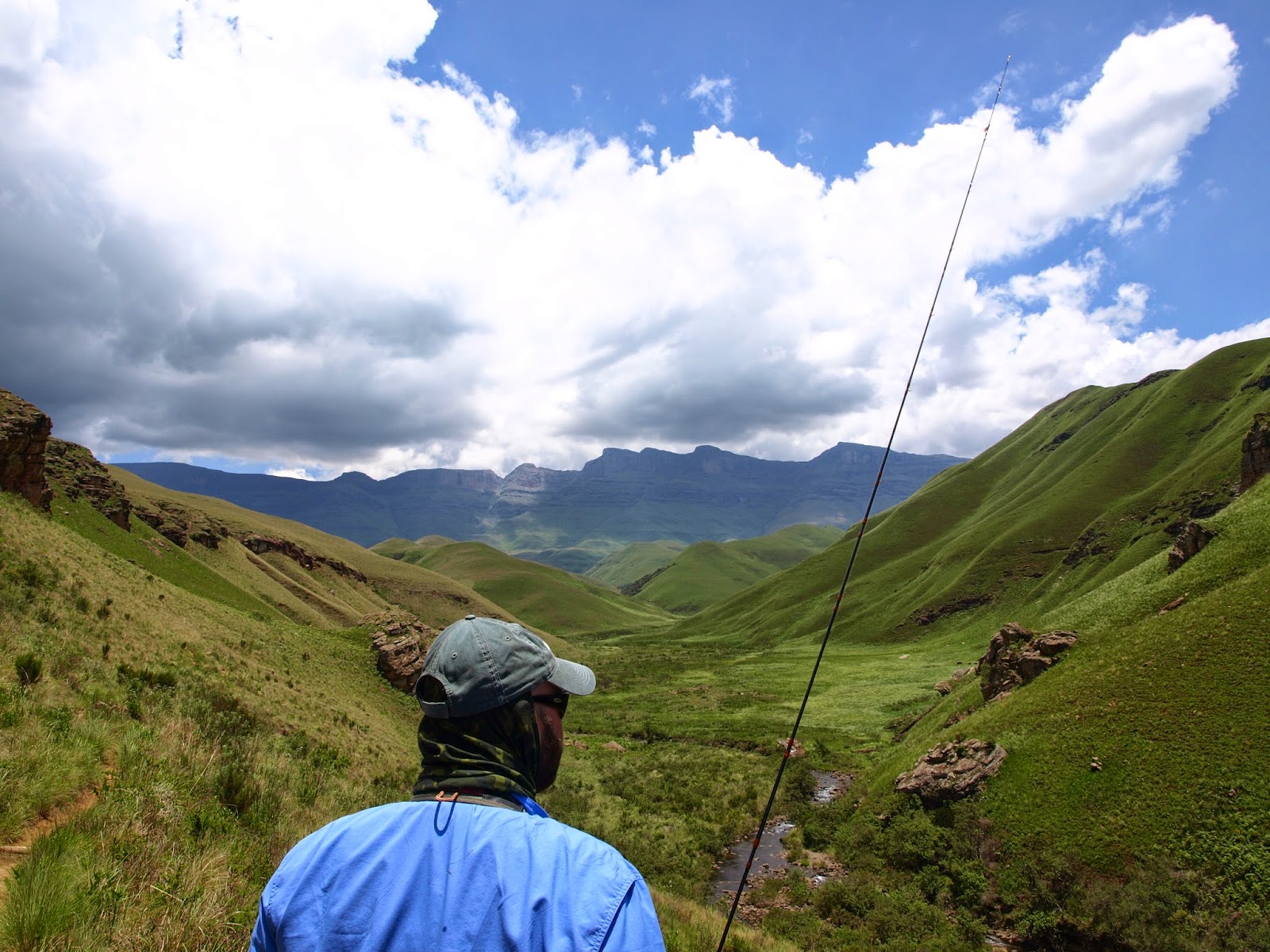Bushmans River, KwaZulu-Natal, South Africa
The Bushmans River is quite simply the prettiest trout stream I have ever fished. That takes some doing, but I was blown away by the setting the second I crossed the cattle grid into the Giant's Castle reserve in the Drakensberg mountains - a tortured landscape of imposing mountains awash in green from recent summer rains.
The Bushmans river was first stocked with brown trout 120 years ago and the trout have thrived and spawned successfully ever since. It is one of South Africa's premier brown trout streams and for the magnificent scenery alone it is easy to understand why.
I had the pleasure of having my sister Emily along for the day and she proved a fine fishing photographer in the making. We set off from our chalet just before 7am when the river and valley floor was still in shadow. The light inexorably descended the western slopes until its warmth touched the river. The shadows eventually all but disappeared except in the most sheer of ravines.
The trail descended from our accommodation on the plateau to the valley's floor. A troop of baboons crossed the trail ahead of us, making for the lush pickings in the wetlands below. We paused and watched their antics, keeping our distance.
Not long after unfurling my first cast, my indicator checked and I lifted my rod into the pulsating pressure of a fish. It was a beautifully marked and lissome brown trout with a belly as yellow as butter.
As the sun's warmth began to be felt I noticed a caddis fluttering above the water in short, rapid spurts of flight. I replaced the nymph with a deer hair caddis pattern, which soon accounted for three trout in splashy and aggressive rises.
We moved steadily upstream from the camp, past a tributary which I have since learned is called the Tweedassie spruit. I momentarily debated whether I should fish up the tributary but chose to follow the mainstem river. It had more water and looked more inviting.
When I encountered any pool deeper than my knees I tied a Zak nymph below the Caddis pattern in the New Zealand style, and the nymph would garner more attention than the dry.
Several times (perhaps three or four times) the dry fly dipped or checked and I lifted into a fish, feeling weight and seeing the sunlit flash of a panicked fish's flank below the surface, but on each occasion the nymph came free. I investigated the hook but it seemed fine and was sharp enough to pierce my skin. I should have changed it sooner but lazily persisted with it. The final straw was when I seemed to hook a trout more hefty than the rest only to see the line go slack again. I gave the cursed Zak a swift burial ceremony and promptly landed the next fish on the same pattern but different hook.
The trout were carbon copies of the fish I had become so accustomed to catching in the rivers and streams of Wales.
At 12pm threatening looking clouds started to gather on the escarpment and the sound of thunder rolled across the valley. Not wanting to be caught in the mountains in an electrical storm - with a 7'5 foot lightening conductor in my hand - we beat a hasty retreat to the camp. The troop of baboons continued to forage on the verdant valley floor, looking nonplussed.
The path we followed took us over a footbridge spanning the Tweedassie spruit. From the bridge I spotted the largest fish I had seen all day. It was a brown trout of about 12 or 13 inches long and it held station just downstream of the bridge, in featureless water less than a foot deep. Had I chosen to fish up the smaller tributary earlier in the day, I wouldn't have expected to find such a good fish in this exposed, shallow water, and would most likely have spooked it whilst wading to the better looking water upstream. A lesson is in there somewhere.
We made it back to our chalet just as the first heavy drops of rain started to fall. The morning session had gone so perfectly I wasn't in the slightest disappointed by the premature end to the fishing.
As far as streams go, this one comes pretty close to what my ideal 'fishing heaven stream' would look like.
















Wonderful photography!
ReplyDeleteI take it the baboons can be dangerous?
Nick, I'll pass on your compliment to the photographer! Baboons are accustomed to humans but can potentially be dangerous. We steered well clear of them! Thanks for your comment.
DeleteThank you, I enjoyed reading this 👍
ReplyDeleteGlad you did, Ralph. Thanks for leaving a comment.
Delete